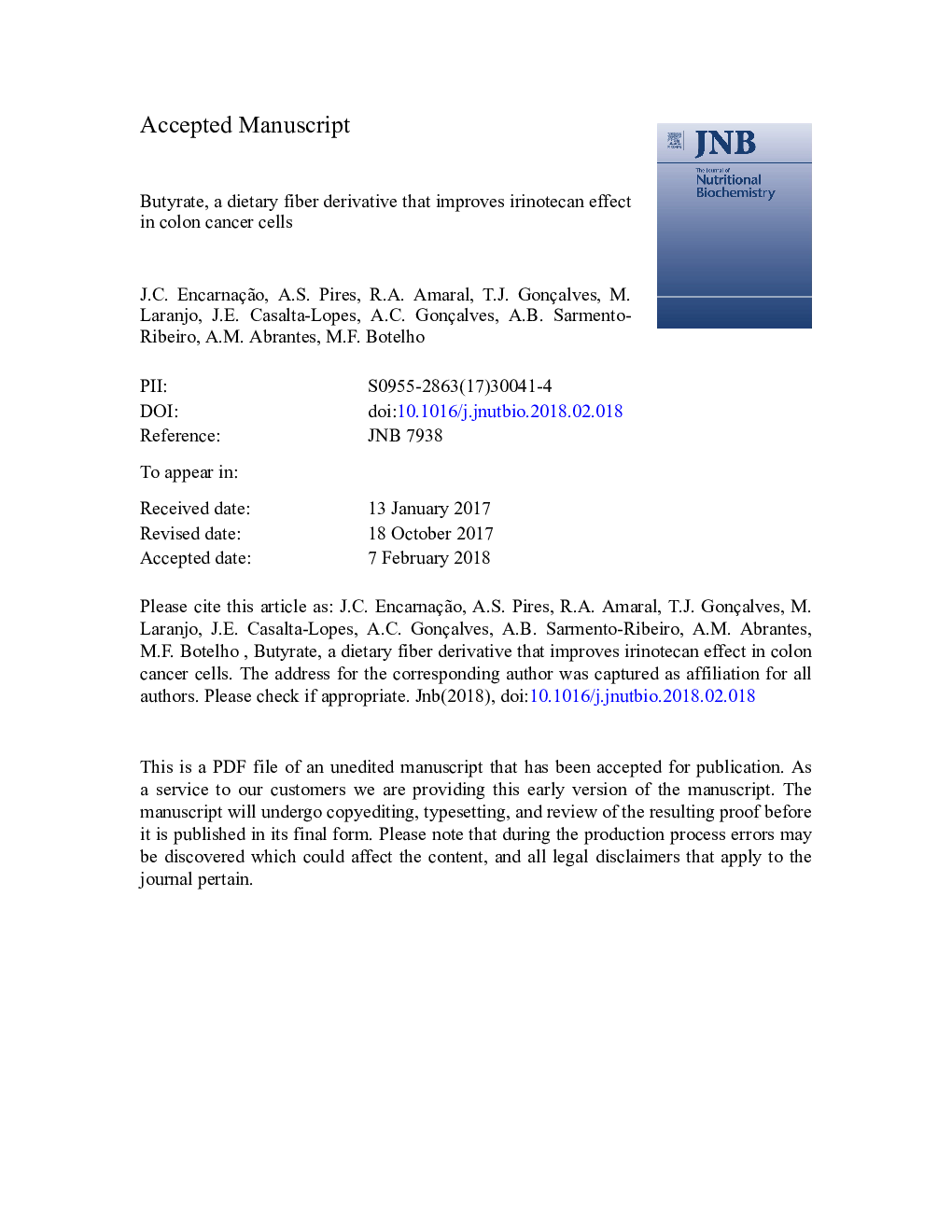| Article ID | Journal | Published Year | Pages | File Type |
|---|---|---|---|---|
| 8336364 | The Journal of Nutritional Biochemistry | 2018 | 30 Pages |
Abstract
A diet rich in fiber is associated with a low risk of developing colorectal cancer. Dietary fiber fermentation by intestinal microflora results in the production of butyrate, which has been reported as a chemopreventive agent and a histone deacetylase inhibitor (HDACi). Irinotecan is used as second-line treatment and induces adverse effects with serious life-threatening toxicities in at least 36% of patients. Our study intends to find a synergy that could improve the efficacy and decrease the toxicity of chemotherapy. Results demonstrate that milimolar concentrations of butyrate has an anti-proliferative effect in all three colon cancer cell lines under study, leading to a decrease on cell viability, expression of P21, P53 and β-catenin, being able to modulate P-glycoprotein activity and to induce apoptosis by modulation of BAX/BCL-2 ratio. Combined therapy has a cytotoxic potential, resulting in a synergistic effect, and allows a reduction in irinotecan concentration needed to reduce IC50. This potential was verified in terms of cell viability and death, cell cycle and expression of P21 and P53. Butyrate and irinotecan act synergistically in the three cancer cell lines, despite the different genetic background and location, and inhibited tumor growth in a xenograft model. Butyrate is able to influence the mechanism of LS1034 cell line chemoresistance. Butyrate in combination with chemotherapeutic agents has an important role for the treatment of colorectal cancer. Such understanding can guide decisions about which patients with colorectal cancer may benefit from therapy with butyrate demonstrating the important role of diet in colorectal cancer treatment.
Keywords
Related Topics
Life Sciences
Biochemistry, Genetics and Molecular Biology
Biochemistry
Authors
João Crispim Encarnação, Ana Salomé Pires, Renata Alexandra Amaral, Telmo José Gonçalves, Mafalda Laranjo, João Eduardo Casalta-Lopes, Ana Cristina Gonçalves, Ana Bela Sarmento-Ribeiro, Ana Margarida Abrantes, Maria Filomena Botelho,
